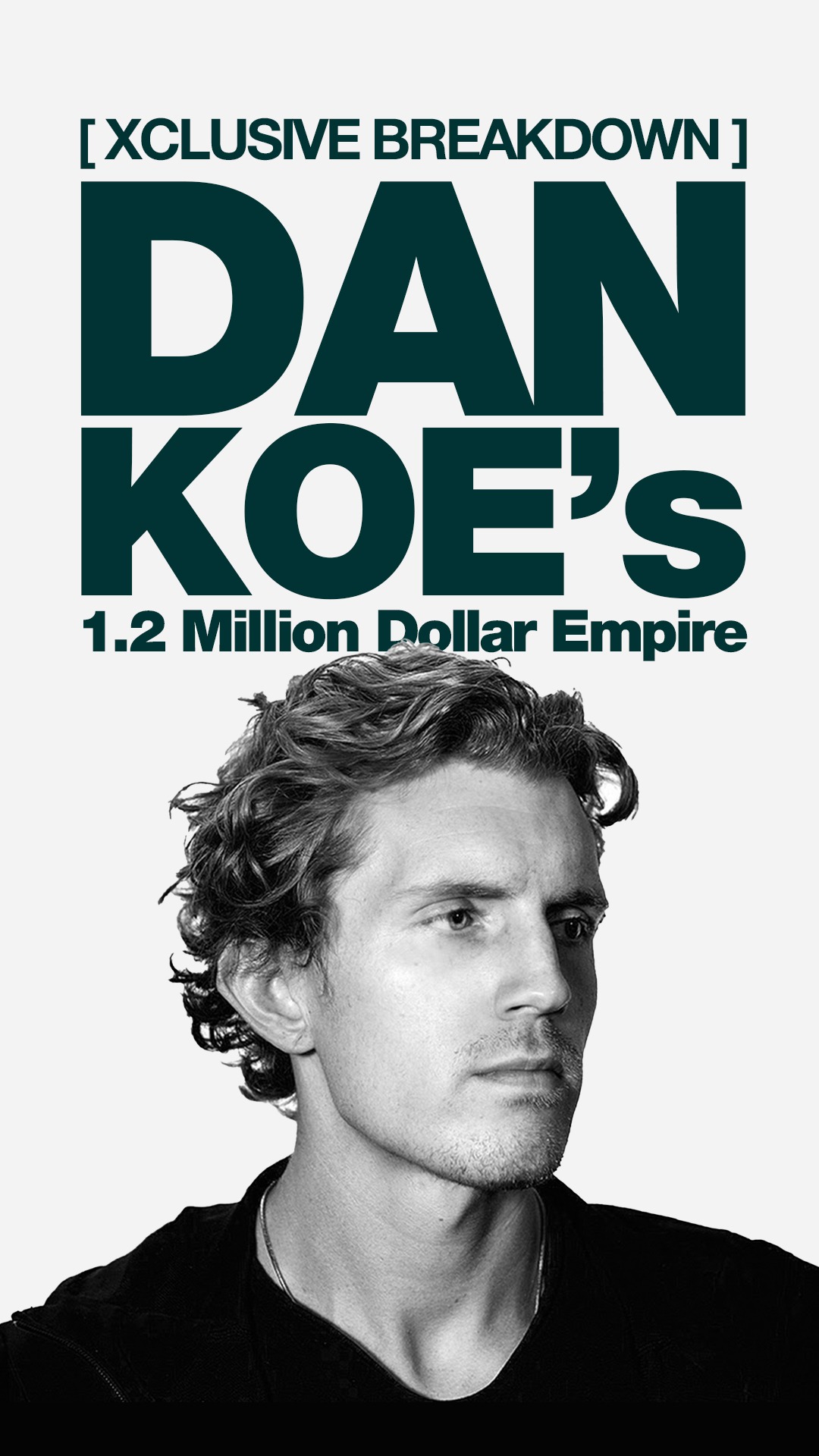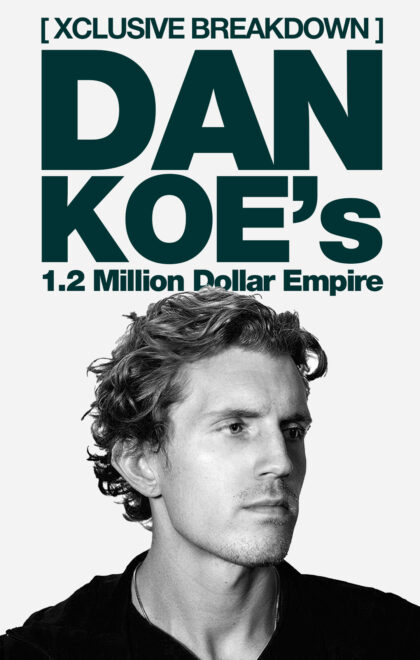DAN 3
Daniel Dalen’s been putting on a content clinic through the first half of 2024.
He’s a 26-year-old business owner, born in the Netherlands and based in Hong Kong. Daniel operates a startup in the ecommerce supply chain category called Ecomflow, runs a packaging factory in China, and has been documenting his journey on YouTube over the past year or so.
His channel’s picked up steam over the past 5 months, with the channel crossing 80,000 subscribers in July—and growing at a clip of 500-1000+ subscribers per day. How do you manufacture growth like this?
The honest answer? Some combination of consistency, skill, and timing. This piece isn’t one of those “here’s how to reverse engineer [insert founder]’s entire strategy.”
You’re probably not going to.
But…there are lessons to be learned. Daniel’s an example of a B2B founder who creates content that doesn’t make you want to watch paint dry instead. He packages his material in a way that has people waiting to queue up his content.
Here are 3 of Daniel’s content rules that I’ve picked up in my binge watching of the content. You can apply these to your own content—whether it’s on LinkedIn, YouTube, or another medium. This stuff is evergreen.
(1) Be the first mover on a repeatable format.
Daniel publishes content in a vlog style, but has found a unique video format and title style. What do you see here?

Repeatable title formatting, with the whole “POV” angle.
Repeatable thumbnail style, with the bold, white POV text in the background and Daniel positioned in front of it.
He’s drifted from the format from time to time, but not often.
This checks two boxes for Daniel. One, repeatable formats reduce creative and logistical strain for the founder. Daniel doesn’t have to think of some revolutionary new idea week in and week out. I don’t know Daniel personally, but I’d imagine this helps keep him consistent.
It’s like having product-market fit, with your content. Content-market fit. Once you have that, run it up and refine the series that works.
Repeatable formats also foster familiarity in the viewer. Viewers, like myself, start to make the content part of our routine. More on creating that routine in a second. First, we gotta talk about something.
Since Daniel started gaining traction on YouTube with his POV series, copycats have been popping up like weeds. None of them have hit the same hot streak. Shocker.
Repeatable formats work. But you only see these meteoric rises when the creator is the first to use their variation of it.
Daniel isn’t the first person to vlog. See Casey Neistat. But he is the first person to use his unique flavor of the format—and it happened to hit.
There’s also something to be said for the positioning of his content. It’s counter to what you’d expect in this corner of YouTube.
Daniel’s content is aspirational, but not obnoxious. Its focus is the business-building lessons—not the material results of them.
Sure. He drives a Range Rover and has a dope office set-up. But I don’t watch his content for that. I watch his content to see how someone who’s also running a fast-growing business and close to me in age approaches building a team, being a leader, all that.

The positioning is counter to that of most of the business content from young founders in their mid-20s on social. I think his audience appreciates that, and trusts him more for it.
(2) Consistency in cadence, and in visual identity.
I hear a lot of wild shit on sales calls with founders. They say they want to ramp up founder-led content. They ramble about how their competitors are doing it. How they’re bought in on it. All that.
Then, they tell me “I want to test posting on LinkedIn 1-2x per month and see if it works.”
My brother in Christ, nobody knows who you are. I don’t think you understand the level of consistency you need to publish—which brings me back to Daniel.
He’s publishing a new YouTube video every week. In the time I’ve been subscribed to his channel, he’s skipped one…I think?
He’s manufactured a routine in his audience’s week. Every weekend, on Sunday morning, I’m looking for a new episode of the vlog to drop. Before writing this, I refreshed the subscriptions feed in my YouTube app to see if today’s was live yet.
It wasn’t, so I sat down to write this.
Daniel didn’t wake up one day, film one episode of his vlog, publish it, and start printing views. It took a few months—and a few title variations—for a video to hit. Now that he’s run with the format weekly for 5 months, he’s become synonymous with the format. It’s his.
Routine is established through repetition. Not rocket science, but worth the reminder.
On a platform like YouTube, that looks like 1-2x per week. If you’re reading this piece, you might be a SaaS founder who cares more about LinkedIn. Over there, 5x per week is the standard. If you’re not there yet, you can’t really complain about slow growth. Just being honest.
Now, there’s a deeper layer to the consistency topic.
Daniel also has a consistent visual identity. You saw the thumbnail format earlier. Here’s a reminder.
When you see one of Daniel’s thumbnails, you know it’s his.

His videos also have a recognizable color grading style, and recognizable locations (like Daniel’s office).

He also has consistent ‘characters’ in his content, like his Head of Growth, Wojtek. See how he’s build a world—with locations, story arcs, and characters—in his content?

Important call-out here. The takeaway isn’t “copy Daniel’s entire aesthetic and format and pray for the best.” The lesson is to apply the fundamentals to your own content.
A few questions for you to self-assess:
- What is a repeatable format that you enjoy producing?
- How can you make your content visually recognizable?
- Can you commit to a cadence that establishes you as part of a routine?
- What frequent locations and characters can you work into your story?
I’ve thought about these criteria for my own content lately.
The format that performs best for me most often is this in-depth, breakdown style. I get in the weeds on a founder or brand whose content I’m obsessed with, and share the learnings with you. It’s bookmark-worthy. It’s also shareable (I hope this ends up in your marketing team’s Slack channel). I also like writing it.
Cadence is dialed. I publish weekly. Monday. 5pm EST. I did miss a week in July during a hiring push for the agency, but I’ve hit 150+ editions at this point.
I’ve always struggled with the visual identity component, though. I’m a writer at heart, and I tend to view spending time on graphics and aesthetics as a waste of time.
I’m okay enough in Photoshop to whip up a scrappy meme with some questionable graphic work. But, it would take me hours to construct a halfway valuable infographic.
And don’t ask me to articulate my ‘aesthetic.’
My point is, I don’t have all of this stuff dialed in, yet. I don’t expect you to either. But, you need to be invested enough to iterate—which leads me to my next takeaway from Daniel’s content.
(3) Obsession is the price of admission.
There’s something else people never like to bring up when studying outliers. They want emulate all the tactics. But they never want to emulate the obsession.
It’s obvious that Daniel is obsessed with the quality of his YouTube content.
He’s testing out new camera angles. Ruthlessly refining the aesthetic of the videos. Iterating the format and topics based on audience feedback. Recording his entire day to have footage—that must be exhausting.
People’s filter for ‘phoning it in’ is fine-tuned. Your audience can tell when you’re showing up to check a box. The energy isn’t there.
I’ve seen that malaise show up in my own writing. Pieces I publish to meet the 5pm EST I have with myself every Monday never seem to hit as well as pieces I pour over and lose myself in. It can’t be a coincidence.
Sure, there’s value in constraints for the sake of consistency. Daniel publishes every week. But the intent behind each video is clear. He’s dialed.
The trend plays out in our clients at Compound as well. Not to transition this into a plug, but it’s worth mentioning. Every one of our ‘outlier’ clients enjoys content creation. They take it seriously. We save them an inordinate amount of time—but they’re still involved in the creative process. And they want to be.
Look at someone like Adam Robinson on LinkedIn. We worked with him early on. He knew nothing about founder content at the time. I had to convince him to hit post on LinkedIn.
21 months later? He’s the poster child for founder-led content in SaaS. He’s obsessed with content. His LinkedIn content production bill is upwards of $50,000 per month. Seems insane, but it’s profitable. His speed ran his new SaaS to $1M in ARR in 16 weeks, with LinkedIn content as the catalyst.



